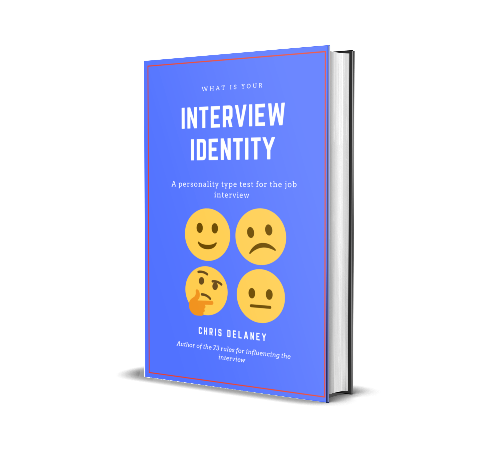Generation Z – Gen Z people, are those born between 1997 and 2012.
As the first Gen Zs start to progress into the workforce, we ask – “what jobs will Gen Zs apply for?”
First, to understand the jobs that Gen Zs will have, you need to understand the common barriers Gen Zs will face during their career progression.
In this article we will cover:
- The future job market
- Growth job sectors
- The global talent market
- Creating multiple income streams
- How do I choose a job
The future job market
Technology, globalisation, and AI have created a fast-changing job market.
In the next ten years, Gen Zs will be applying for jobs that currently don’t exist.
With the likes of Elong Musk and Richard Branson designing, building, and launching their own rockets, jobs in space is no longer a futuristic idea. It’s happening right now.
Other job roles will disappear.
Some will simply no longer be required, but others will be automated – completed by robots. A Fortune recent article said that: “robots will replace 40% of jobs in the next 15 years”.
This could include many low to medium-skilled jobs. Already, Amazon-fresh has opened it’s just walk out’ shop, allowing shoppers to purchase goods without having to wait in a long queue to pay for their groceries, removing the need to hire checkout operators.
Robots and technology will be used in dangerous industries such as fire fighting, mining, and on the battlefield.
In many of these sectors, robots and humans will work side by side with the machine tackling the most hazardous part of the task.
In an article earlier this year on The Guardian, they explained how: “Thirty thousand “robot soldiers” could form an integral part of the British army in the 2030s”.
Already, AI is used in HR (Human Resources) reducing the number of humans required to complete business as usual tasks. AI is employed to scan job applicants’ application forms and even to conduct online job interviews.
Growth job sectors.
To predict what jobs will be available for Gen Z job seekers, forecasters look at future demands, and what jobs will be required to produced the ‘demand’.
Sarah Dillon in a recent article on the ladders listed 10 possible growth sectors
- Data science
- Software development
- Healthcare
- Artificial Intelligence
- Mental health
- Sales
- Digital designers
- Marketing
- Finance
- Education
Some experts believe that a new industrial revolution is on its way.
With AI, nanotechnology, genetics, automation, 3D printing, science, and all things STEM creating new ways to solve problems, the world is changing at a rapid rate.
HR Technologist explained the 5 drivers of change:
- The rise of technology
- Social and demographic chnages
- Connectedness
- A global talent market
- Man-Machine collaberation
The global talent market.
The job market has always been competitive.
The difference fro Gen Z job applicants is the number of people applying for the same advertised position.
Prior to the launch of online applications, job seekers had to handwrite a lengthy job application form. The time this took, as well as the number of hours search then ‘job column’ in a newspaper or traveling to business to physically hand-in your CV, resulted in a lower number of applications per vacancy.
The average number of applications per vacancy was around 25.
Once online applications became the new way to apply for job roles, career professionals, uploading CVs and copying and pasting application forms, could quickly apply for a number of different roles in quick succession.
Today, the average number of applications per role is around 250. But for global companies; Google, Microsoft, Telsa, the average number of applications is in the thousands.
To summarise, the job marketing is changing.
But this is nothing new. The job market is a living beast, always shifting, evolving based on a number of drivers of change which can also include global economics, customer demand, and technology.
These drivers of change can help Gen Z job seekers predict future job growth sectors.
Applying for a position is more competitive than ever before. And applicants may be interviewed by robots not humans.
This new era of work is leading Gen Z career professionals to have multiple income streams.
Creating multiple income streams.
Having multiple jobs or incomes is the new norm.
Gen Z’s have grown up with their bedrooms filled with technology, with a virtual set of friends, and half their life spent online.
For the Gen Z, having a virtual job, either as a second income or a full-time position is an obvious solution.
The online position may include:
- Creating a second income from a blog, podcast or youtube channel
- Selling goods on an Etsy channel is relatively easy, often with low overheads
- Offering services on fiver or getting finacial backing for an idea or product through kickstarter can create massive earnings
The days of working in one organization for life have long gone, even among the older workforce. The banking crisis and Covid have shown how unexpected events can kill careers.
Young people have many interests, many skills, many options. Having multiple jobs can be creative, challenging and creates choice.
If one job doesn’t work out, the Gen Z worker can leave while still having an income from a second or third career.
Gen Z understands the global market and will work for companies in various countries.

How to choose a job?
Salary is still a career motivator for many people.
But Gen Zs are also interested in the ethics of an organization, their values, and mission.
Whereas an older career professional may have the belief that you should accept the job based on the salary alone, Gen Z job applicants will reflect on their work-life balance, the environment they will be working in, what freedom they will have in the job, and if their personal values meet the values of the employer.

This new outlook affects employers.
On average, career professionals only stay in a job for an average of 3-5 years. Compared to the Gen Zs grandparents who would have had a ‘job for life’.
This is why employers, especially in sectors where there are more jobs than applicants, or in growth sectors, or industries with an aging workforce, will work hard to increase staff retention.
This is why tech companies looking to recruit the youth, have flexible working hours. In these companies, you can bring your dog to work, have a nap in a ‘sleeping bay’ or take a duvet day whenever you require one.











